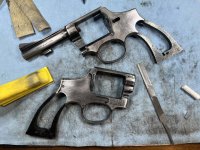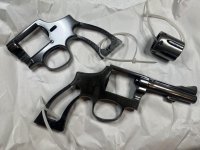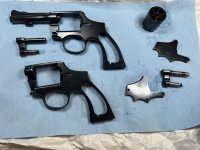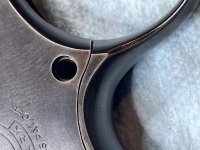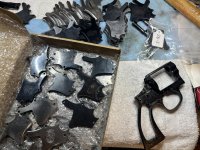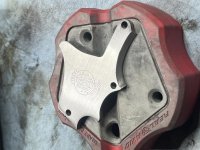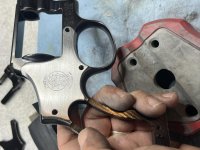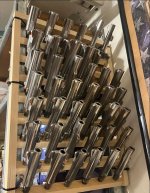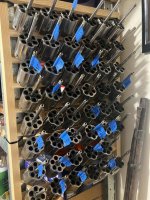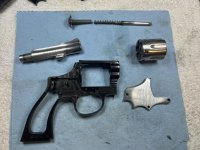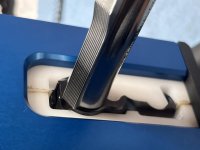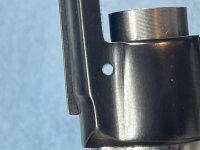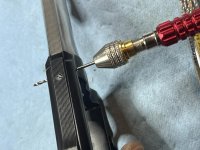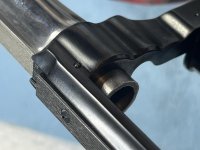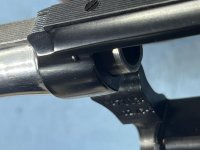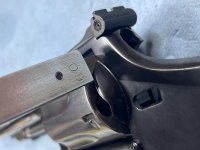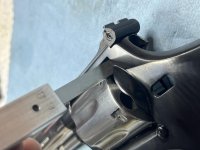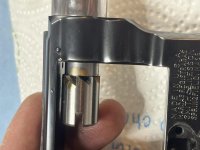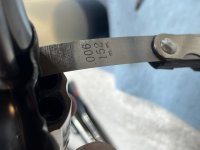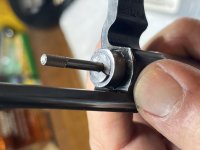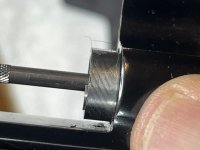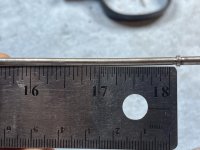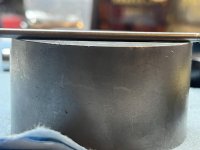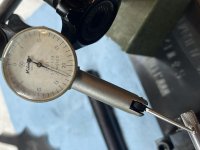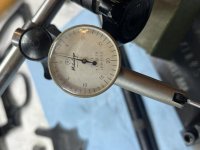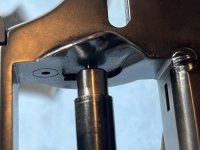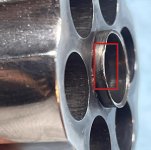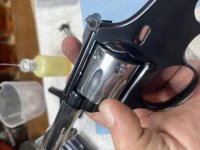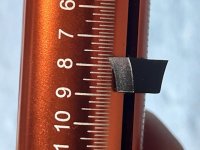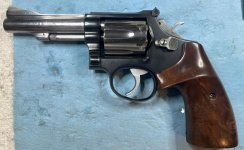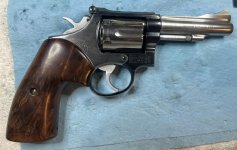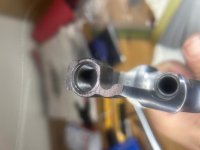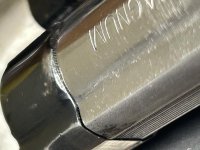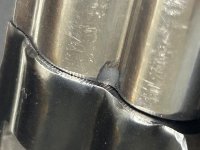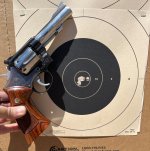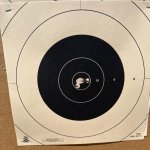Sharp-eyed readers of the Rustbucket thread noticed that there was a second frame that went along for the ride during the metal finishing and bluing process. The second frame was another homely Model 15-3 that needed a facelift.
I've done a few two-tone projects but most of those kind of "ended up" that way. This time we have a plan and a purpose....
Welcome to the Faux Pinto thread.
Our soon-to-be-pinto was stripped down to the frame, yoke, and sideplate, and was treated to the same metal prep and bathroom rust bluing that was done to Rustbucket. There are lots of details about that in the other thread. Here are a few pics of the two frames as they went through the process.
I've done a few two-tone projects but most of those kind of "ended up" that way. This time we have a plan and a purpose....
Welcome to the Faux Pinto thread.
Our soon-to-be-pinto was stripped down to the frame, yoke, and sideplate, and was treated to the same metal prep and bathroom rust bluing that was done to Rustbucket. There are lots of details about that in the other thread. Here are a few pics of the two frames as they went through the process.
Attachments
Last edited:

